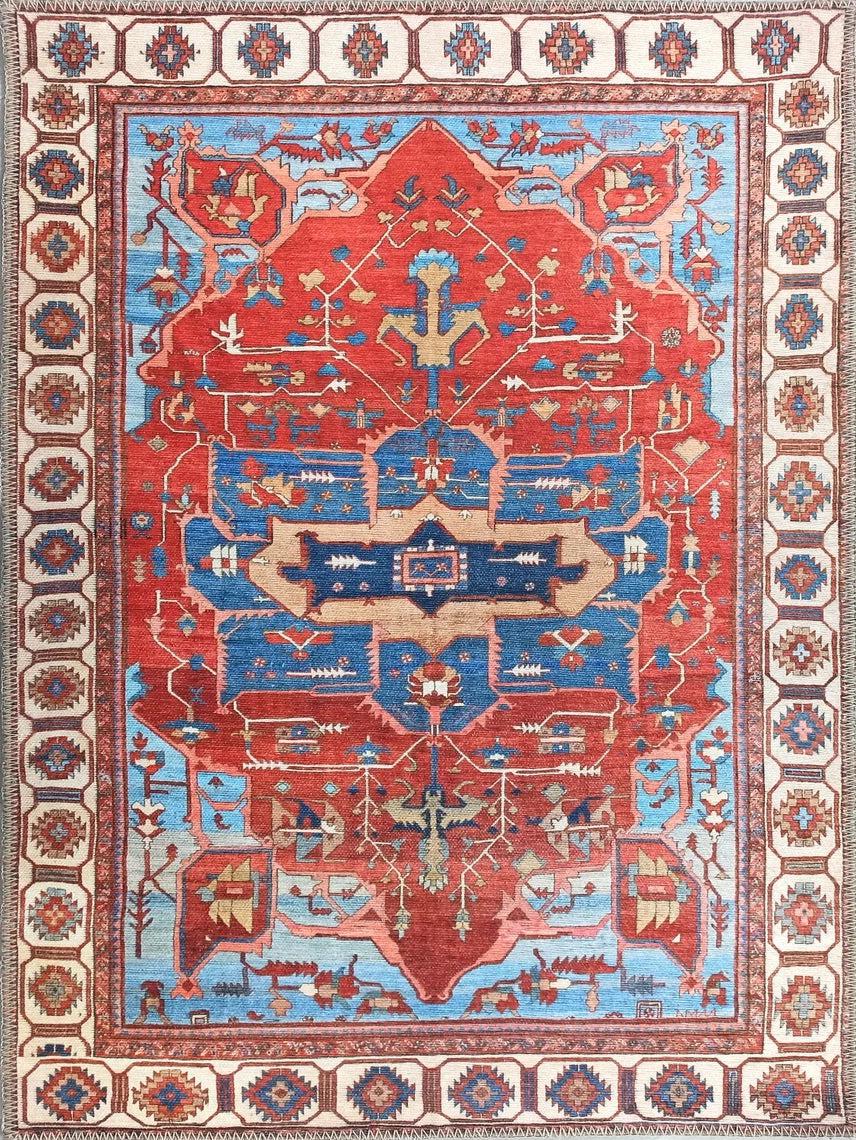Traditional rugs bring timeless elegance, rich patterns, and warm textures that can beautifully complement a modern living room. While modern interiors often lean toward minimalism, a traditional rug can add character, depth, and contrast, creating a space that feels curated and inviting. If you’re wondering how to blend classic and contemporary styles seamlessly, here’s a step-by-step guide to incorporating a traditional rug into your modern living room.
1. Choose the Right Traditional Rug

The first step is selecting a traditional rug that harmonizes with your modern space. Persian, Oriental, and vintage-inspired rugs are popular choices, featuring intricate patterns, floral motifs, and rich color palettes. Consider the following:
-
Muted vs. Bold Colors – If your modern living room has a neutral palette, a bold-colored traditional rug can serve as a stunning focal point. Alternatively, a muted, distressed traditional rug can subtly enhance the space without overwhelming it.
-
Material Matters – Wool and silk rugs offer a luxurious touch, while synthetic and cotton options provide durability and affordability.
-
Pattern Play – If your furniture is sleek and monochromatic, opt for a rug with intricate patterns to introduce visual interest.
2. Balance Old and New Elements

A traditional rug stands out in a modern living room when paired with clean lines and contemporary furniture. To create a balanced look:
-
Go for Minimalist Furniture – Let the rug take center stage by pairing it with simple, modern furniture featuring neutral tones, straight lines, and sleek finishes.
-
Mix Textures – Incorporate soft, plush fabrics like velvet or linen to contrast with the rich texture of the rug.
-
Keep Walls and Décor Subtle – Neutral or muted walls help prevent the space from feeling too busy. Opt for abstract art, modern lighting, and understated accessories.
3. Play with Rug Placement

Where and how you position your rug can impact the room’s overall aesthetic. Here are a few placement tips:
-
Under the Coffee Table – Placing a traditional rug under a modern coffee table helps anchor the seating area.
-
Full Room Coverage – A large traditional rug covering most of the floor can unify the space and create a warm, cohesive look.
-
Layering Technique – For added dimension, layer a smaller traditional rug over a larger neutral or jute rug. This softens the contrast between classic and contemporary elements.
4. Pair with Modern Accents

To maintain a fresh, contemporary feel while integrating a traditional rug, complement it with modern accents:
-
Glass or Metal Elements – Glass coffee tables, brass light fixtures, and metallic décor add a sleek, modern touch.
-
Geometric Shapes – Pairing a classic rug with modern, geometric furniture or wall art creates an intriguing contrast.
-
Minimalist Shelving – Open, streamlined shelves keep the space from feeling too heavy or ornate.
5. Use Color Coordination for Cohesion

To tie everything together, pull colors from the traditional rug and incorporate them into the rest of the room:
-
Accent Pillows & Throws – Use shades from the rug’s design in throw pillows, blankets, or upholstery.
-
Artwork & Décor – A modern painting or vases in matching hues create a seamless transition between the rug and the room.
-
Curtains & Accessories – Keeping curtains in complementary tones prevents visual clashing.
Final Thoughts
A traditional rug can be a game-changer in a modern living room, adding warmth, history, and personality while maintaining a contemporary aesthetic. By carefully balancing textures, furniture, and color schemes, you can create a space that feels effortlessly stylish and timeless. Whether you prefer a bold, statement-making rug or a subtle vintage piece, the right combination of elements will allow your modern living room to embrace classic charm without feeling outdated.






























































































































































































































